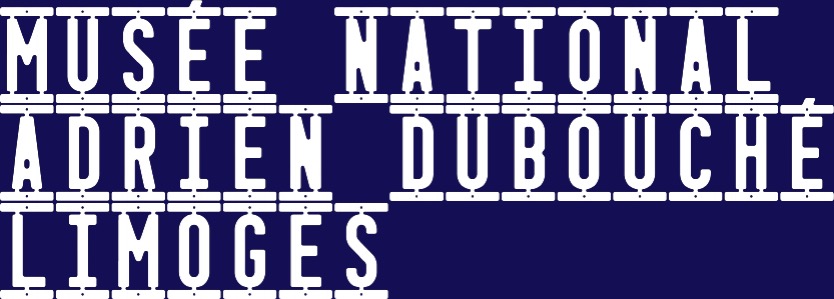Following substantial renovation to the building in which the museum has been since 1900, the Adrien Dubouché National Museum re-opened to the public in June 2012. For those familiar with the old premises, the renovation will seem like a metamorphosis : the considerably larger museum now exhibits a redesigned collection following a natural but logical route, in which Limoges porcelain takes its natural place within the overall history of ceramics.
Founded in 1845 by Tiburce Morisot, the Prefect of the Haute-Vienne department, the first Limoges museum was initially housed in the Prefectural building, on the Place du Présidial. Its purpose was to build up an encyclopaedic collection of paintings, sculptures and art objects which were collected by the members of the Limousin Archaeological and Historical Society.
Adrien Dubouché took over as Director of the museum in 1865. To enrich the collections, he made significant donations, and encouraged a number of requests from French and foreign ceramics manufactories. He very quickly began to look for premises which were better suited to presenting the collections. The city of Limoges provided him with the building of an unused mental asylum on the Place du Champ-de-Foire, which was modified to display the collections and house the School of Decorative Arts, founded by Dubouché.
In 1875, upon the death of his friend Albert Jacquemart, author of the famous work “Les Merveilles de la céramique”, Dubouché acquired his collection of ceramics containing 587 pieces, which he gifted to the city of Limoges. In recognition of this generous donation, and even though Dubouché was still alive, the Mayor of Limoges gave his name to the museum, an exceptional decision that was included in a Government decree.
Upon Dubouché’s death in 1881, the museum and the School were nationalised and the Government began to build new buildings on land given by the city. The management of both establishments was entrusted to the Director of the National School of Decorative Arts in Paris, Auguste Louvrier de Lajolais. The Parisian architect Pierre-Henri Mayeux was in charge of building the school and the museum. He designed two adjoining buildings which were inaugurated in 1900.
In the mid-1990s, the National School of Decorative Arts in Limoges moved to the university campus, freeing up space to expand the museum.
In 2003, the Ministry of Culture and Communication launched an international competition for the renovation of the museum, which was won by the Viennese architect Boris Podrecca. His project, to create a contemporary extension between the two existing buildings, preserved the historical character of the premises whilst giving the museum a totally new entrance and a light-filled lobby area leading into the permanent exhibitions. Designed like an Italian piazza, the esplanade in front of the museum’s new glass and porcelain façade is home to a work by Haguiko and Jean-Pierre Viot – “Une Suite” – acquired under the “1% artistique” policy. The design of the permanent exhibition rooms was entrusted to the architect and set designer Zette Cazalas. Finally, the Atelier ter Bekke & Behage designed the typography made from Limoges porcelain that is used throughout the museum, implicitly embodying the concept of the porcelain museum. The project designed by Atelier ter Bekke & Behage therefore strongly reinforces the museum’s image, setting it in the industrial context specific to Limoges. Porcelain is no longer only present behind glass, but between each and every showcase, giving a cohesion to the “new ceramic museum” of Limoges. The use of porcelain allows visitors to acknowledge the highly contemporary nature of this material, with its strong, unique presence in the museum.
Inaugurated on 28 June 2012 by Aurélie Filippetti, the Minister for Culture and Communication, the museum has since attracted a large public, curious to discover an internationally renowned collection in a new environment.
